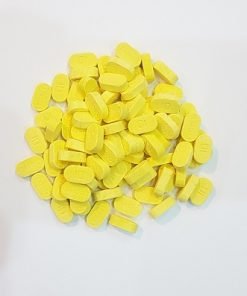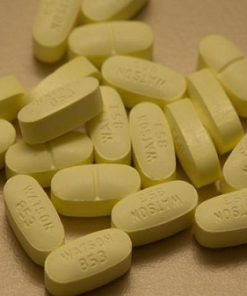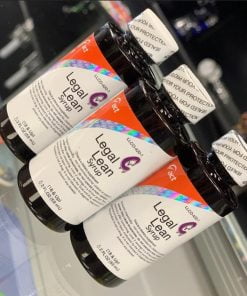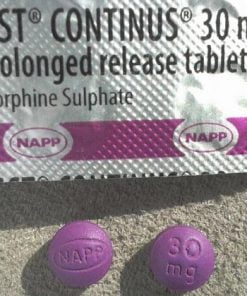Percocet 5 mg/325 mg, 7.5 mg/325 mg, 10 mg/325 mg
Percocet 30 mg is a medicine used to treat the symptoms, of acute pain and moderate-to-severe pain. Percocet may be used alone or with other medications. Available percocet pill include: Percocet 30 mg, percocet 10/325, percocet 5/325 at Royal Meds Pharma without prescription.
Oxycontin
Increasing severity of pain will require an increased dosage of OxyContin tablets, using the 5 mg, 10 mg, 20 mg, 40 mg or 80 mg tablet strengths, either alone or in combination, to achieve pain relief. The correct dosage for any individual patient is that which controls the pain and is well tolerated for a full 12 hours. Patients should be titrated to pain relief unless unmanageable adverse drug reactions prevent this. If higher doses are necessary, increases should be made in 25% – 50% increments. The need for escape medication more than twice a day indicates that the dosage of OxyContin tablets should be increased.
Percocet 30 mg Pill for sale online
The usual starting dose for opioid naïve patients or patients presenting with severe pain uncontrolled by weaker opioids is 10 mg, 12-hourly. Some patients may benefit from a starting dose of 5 mg to minimise the incidence of side effects. The dose should then be carefully titrated, as frequently as once a day if necessary, to achieve pain relief. For the majority of patients, the maximum dose is 200 mg 12-hourly. However, a few patients may require higher doses. Doses in excess of 1000 mg daily have been recorded.
Percocet Tablets for sale
Percocet Tablet is used to treat, control, prevent and improve the following diseases, conditions and symptoms:
- Moderate to severe pain
- Fever
- From mild to moderate pain
- Headache
- Moderate to severe pain
[sc_fs_faq html=”true” headline=”h4″ img=”” question=”Does Percocet have codeine in it?” img_alt=”” css_class=””] The clearest difference between Percocet and codeine is their chemical formula; they are different opioids. Percocet is a brand name for a combination of oxycodone and acetaminophen, a nonsteroidal anti-inflammatory drug (NSAID), while codeine is a less potent narcotic painkiller that is used more often in prescription cough medicine because it suppresses the urge to cough. Codeine is a generic drug that is found in several brand name medications. [/sc_fs_faq]
Buy Percocet 30 mg no script needed
Below is a list of possible side effects that can be caused by elements that are part of the tablet. This list is not final, these side effects were fixed earlier. But not always fixed with the drug. Some of these side effects can occur extremely rarely, but have incredibly serious consequences. If any side effects are found, contact your doctor immediately.
Especially in case of observing side effects for a long time.
- Skin Reactions
- Superficial breathing
- Slow heartbeat
Best percocet pill available online: Percocet 30 mg, percocet 10mg, percocet 10/325, percocet 5/325
Precautions and rules for use
Before you start taking this medication, tell your doctor about the medicines you are using, food supplements (for example, vitamins, natural supplements, etc.), allergic reactions, existing diseases and the current state of health (eg, pregnancy, upcoming operation, etc.). Order percocet 30 mg
Do not take ≥3 alcoholic beverages per day while taking acetaminophen
Stop use, if the pain gets worse than 10 days, fever gets worse than 3 days or new symptoms
How should I take Percocet | Percocet 5/325
Follow all directions on your prescription label. Never use this medicine in larger amounts, or for longer than prescribed. An overdose can damage your liver or cause death.
Interaction of the tablet with other drugs
If you take other drugs or supplements, concurrently with this drug, the effectiveness of Percocet Tablet may change.
The tablet can interact with the following drugs and products:
- Butorphanol
- Nalbuphine
- Naltrexone
- Pentazocine
- Warfarin
Medications such as Sertraline 50 mg To Help with the Anxiety and depression
What Is Percocet?
Percocet is an opioid pain medication. It contains a combination of acetaminophen (the active ingredient in brand-name Tylenol) and oxycodone, which helps to treat moderate to severe pain. It is only available with a healthcare provider’s prescription and should be taken as prescribed for the best results.
Due to its risk of addiction and misuse, Percocet is typically reserved for those who are not able to achieve adequate symptom relief with nonopioid pain relievers alone.
How Does Percocet Work?
Oxycodone binds to specific opioid receptors, such as mu, kappa, and delta receptors, to help reduce pain levels. Acetaminophen helps with minor aches and pains while boosting the effects of oxycodone.64
What Is Hydrocodone?
Hydrocodone is an opioid medication often prescribed to treat pain. It is marketed under the brand name Hysingla in an extended-release (ER) tablet for pain severe enough to require daily, long-term opioid treatment. It acts on the central nervous system (made up of the brain and spinal cord) and changes how the body recognizes pain. It should be used only as directed by a healthcare provider because of its high potential for addiction and abuse.
How Does Hydrocodone Work?
Hydrocodone is a mu-opioid (μ-opioid) receptor agonist, which means it activates the mu-opioid receptors. It can also bind with different opioid receptors at higher concentrations. By doing this, hydrocodone blocks pain signals from being sent throughout the body. This alters how pain is perceived by the brain.73
What’s the Difference Between Oxycodone and Hydrocodone?
Dosage: Percocet vs. Hydrocodone
Percocet, a combination of oxycodone and acetaminophen, is prescribed for moderate to severe pain relief. The dosage combines two active ingredients, oxycodone and acetaminophen, with different strengths.4
Hydrocodone is available in ER formulations. The dosage will vary depending on the condition being treated and the individual’s response to it.The ER hydrocodone products have different dosing schedules, but are often taken once daily.3
The following table summarizes the dosing information for Percocet and hydrocodone.
| Percocet | Hydrocodone | |
| Forms & strengths | Oral tablets: 2.5 milligrams (mg) oxycodone/325 mg acetaminophen, 5 mg/325 mg, 7.5 mg/325 mg, 10 mg/325 mg | ER oral tablets: 20 mg, 30 mg, 40 mg, 60 mg, 80 mg, 120 mg |
| Recommended dosage | 2.5 mg/325 mg: One or two tablets every six hours as needed
5 mg/325 mg: One tablet every six hours as needed 7.5 mg/325 mg: One tablet every six hours as needed 10 mg/325 mg: One tablet every six hours as needed |
Starting dose in people who are opioid-naive (have not taken opioids before) or not opioid tolerant: 20 mg every 24 hours |
Side Effects: Percocet vs Hydrocodone
Both Percocet and hydrocodone have similar side effects, which can include:34
- Nausea
- Constipation
- Headache
- Dizziness or light-headedness
- Drowsiness
Severe side effects that are associated with both Percocet and hydrocodone include:
- Respiratory depression (slowed breathing)
- Hypotension (severely low blood pressure)
- Adrenal insufficiency (most often when using it for more than one month)
- Serotonin syndrome (when used with other drugs that boost serotonin)
Because both medications are opioids, there is a potential risk of dependence and misuse, which can lead to an overdose. Talk to your healthcare provider if you are concerned about substance dependence.
Both medications should be taken with caution and under the supervision of a healthcare provider.
Safety Precautions with Opioid Use
When using Percocet or hydrocodone, keep in mind the following safety considerations:
- Avoid driving or operating machinery when taking opioids: Opioids can cause drowsiness and impaired coordination. Operating heavy machinery while taking opioids increases the risk of accidents and injuries.
- Do not mix opioids with alcohol or other drugs: Always consult your healthcare provider before using opioids in combination with other medications. Opioids, together with alcohol, can have dangerous consequences since this combination intensifies sedative effects, potentially leading to respiratory depression or overdose.
- Take as directed by your healthcare provider: Strictly adhere to the dosing instructions provided by your healthcare provider. Do not alter the dosage or frequency without their guidance. Taking opioids as prescribed helps manage pain effectively while minimizing the risk of dependence or misuse.
- Dispose of them safely: Properly dispose of unused opioids to prevent misuse or accidental ingestion by others. Follow local guidelines or consult your pharmacist for safe disposal methods.
- Store medications safely: Keep opioid medications out of reach of children and pets. Store them securely, away from moisture and direct sunlight, per the medication’s specific storage requirements.
Customer Reviews
- Reliability - 98.2/100
- Standard - 93.7/100
- On-time - 92.3/100







Leave a Reply